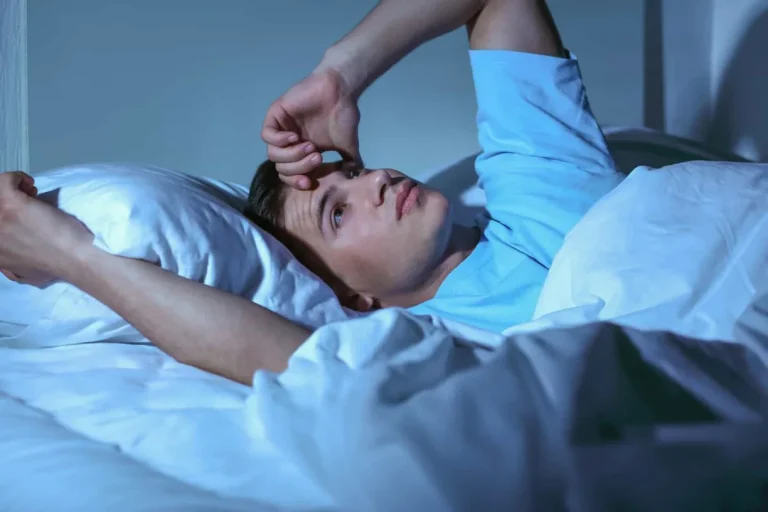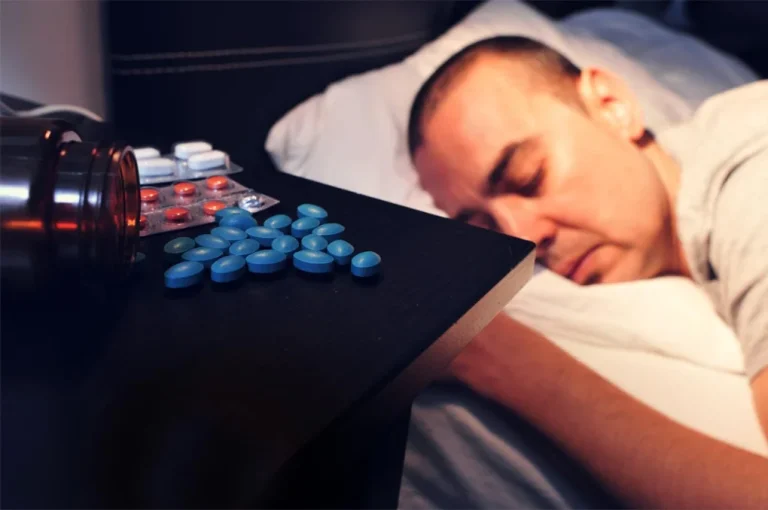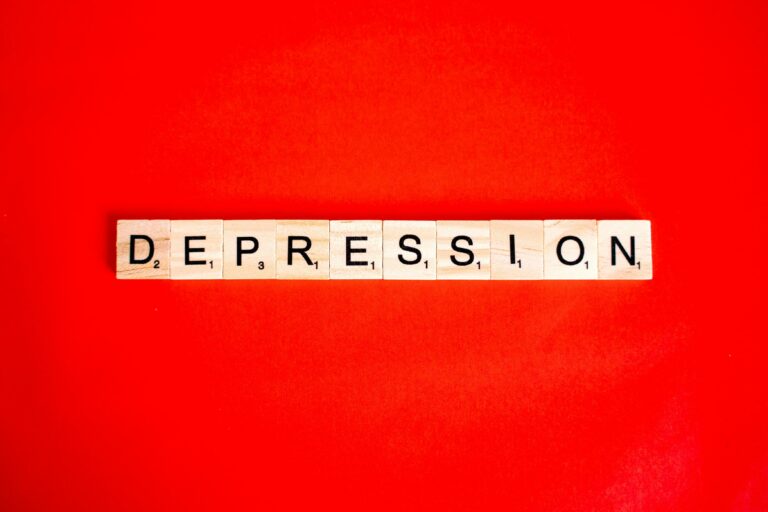What Are the Best Treatments for Restless Legs?
To treat Restless Leg Syndrome (RLS), start by modifying your lifestyle. Avoid alcohol, caffeine, and nicotine. Consult your doctor to review medications and address underlying conditions like iron deficiency. Regularly engage in leg stretching exercises to improve flexibility and reduce muscle tension. Alternating heat and cold therapies can alleviate discomfort effectively. Iron supplementation is essential if your levels are low, enhancing dopamine production essential for managing RLS. Medications like dopamine agonists, benzodiazepines, opiates, and anticonvulsants provide significant relief. Massage techniques can also help. Curious about more detailed information?
Noteworthy Details
- Daily stretching exercises targeting key muscle groups like calves and hamstrings can significantly reduce RLS symptoms.
- Iron replacement therapy is crucial for managing RLS, especially if low iron levels are detected.
- Heat and cold therapy can improve blood flow, alleviate muscle tension, and reduce discomfort.
- Medications such as dopamine agonists and benzodiazepines provide effective relief and improve sleep quality.
- Regular massage sessions employing deep tissue and trigger point techniques can alleviate discomfort and improve overall symptoms.
Lifestyle Modifications
When managing Restless Legs Syndrome (RLS), lifestyle modifications such as avoiding alcohol, caffeine, and nicotine can greatly alleviate symptoms. These changes are fundamental for managing RLS effectively. Start by reviewing your medications with a doctor, as some can exacerbate symptoms. Addressing underlying medical conditions like iron deficiency or diabetes is also vital.
Incorporating dietary supplements, particularly those rich in iron and magnesium, can provide symptom relief. Physical therapy tailored to your needs can enhance muscle function and reduce discomfort. Additionally, relaxation techniques such as yoga, meditation, and deep-breathing exercises can be highly advantageous, helping to reduce the stress that often aggravates RLS symptoms.
Good sleep hygiene is another essential component. Create a calming bedtime routine, maintain a consistent sleep schedule, and make sure your sleep environment is conducive to rest.
Regular exercise, particularly aerobic activities and lower body strength training, can greatly improve symptoms. Aim for a balanced approach that includes moderate, consistent physical activity without overexerting yourself.
Leg Stretching Exercises
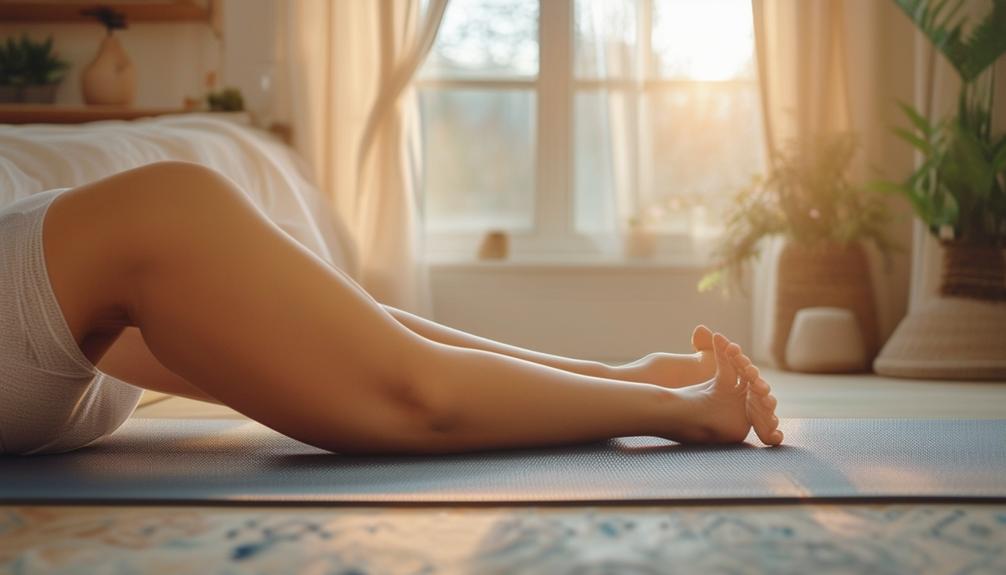
How can leg stretching exercises specifically target the muscle groups affected by Restless Legs Syndrome to alleviate discomfort and improve flexibility? By focusing on key muscle groups such as the calves, hamstrings, and quadriceps, leg stretching exercises can help relieve the symptoms of restless legs syndrome (RLS). These exercises enhance muscle flexibility and reduce the tension that often exacerbates RLS sensations. When you perform these stretches, you promote relaxation in the affected muscles, which can greatly diminish the discomfort associated with RLS.
Incorporating leg stretching exercises into your daily routine is an evidence-based, non-pharmacological approach to managing RLS symptoms. Studies indicate that regular stretching can increase muscle elasticity and improve blood flow, thereby reducing the frequency and intensity of restless leg episodes. You can perform these exercises at home or under the supervision of a physiotherapist who can tailor the routine to your specific needs.
For instance, simple stretches like calf raises and hamstring stretches can be highly effective. Over time, these exercises not only help alleviate immediate discomfort but also contribute to long-term muscle health and flexibility. By committing to a daily stretching regimen, you can create a sense of community and shared purpose among those seeking relief from RLS.
Heat and Cold Therapy
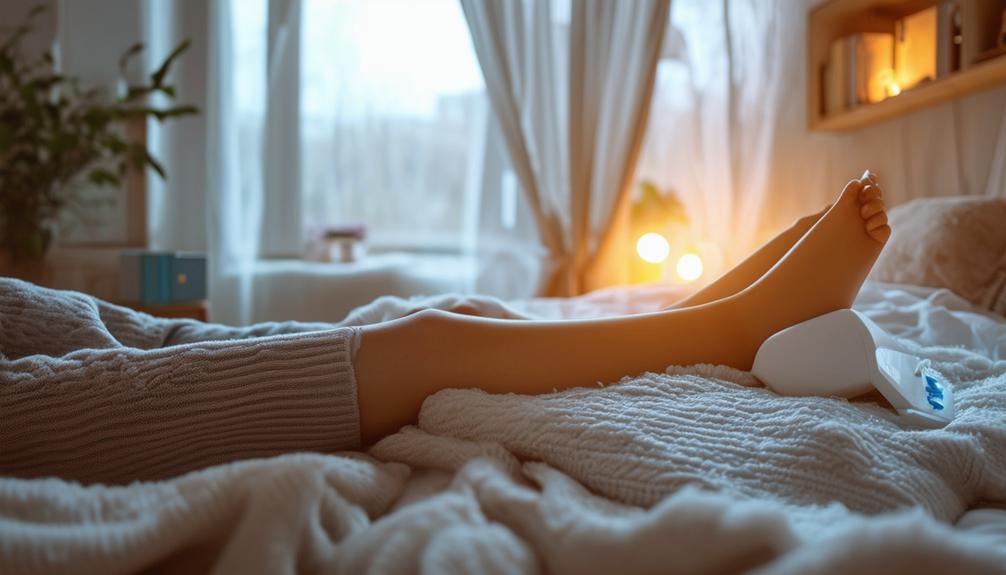
Heat and cold therapy offer effective, non-invasive methods to alleviate the symptoms of restless legs syndrome by targeting muscle relaxation and inflammation reduction. Utilizing heat therapy, such as warm packs or baths, can greatly improve blood flow and alleviate muscle tension. This approach promotes an environment where muscles can relax, thereby reducing the sensations of restlessness.
On the other hand, cold therapy involves the application of cool packs or the use of vibrating pads, which can help reduce discomfort and improve circulation. The numbing effect of cold therapy diminishes the intensity of abnormal sensations in your legs, while its anti-inflammatory properties further support symptom relief.
Alternating between heat and cold therapy maximizes the benefits of both methods. This combined approach can promote thorough muscle relaxation and effectively reduce inflammation, providing you with holistic relief from the distressing symptoms of restless legs syndrome.
Both heat and cold therapy are non-invasive and cost-effective, making them accessible options for anyone seeking relief. Incorporating these therapies into a complete management plan ensures a balanced approach to managing restless legs syndrome, enhancing your overall well-being and sense of belonging within a supportive community.
Iron Replacement Therapy
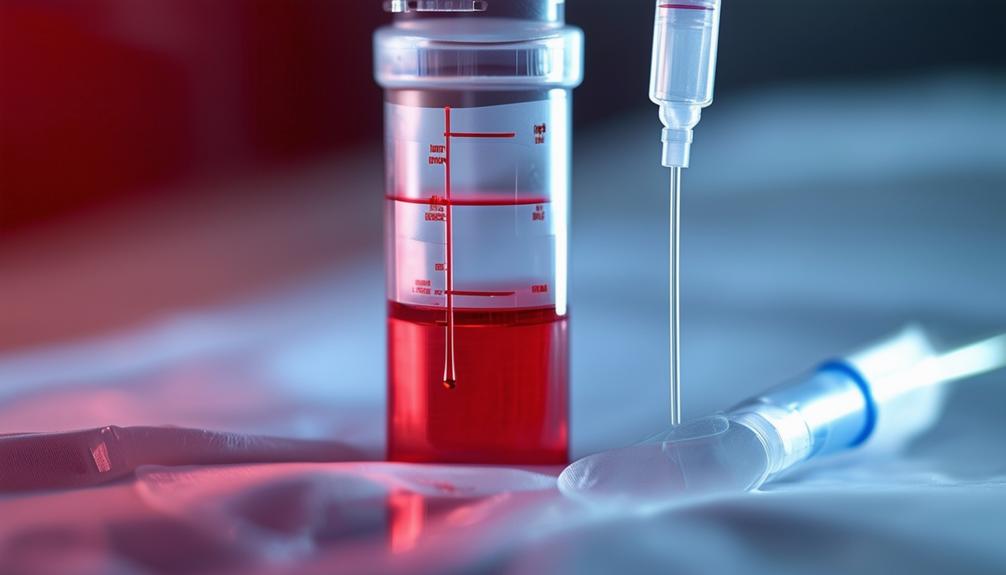
Iron replacement therapy plays a critical role in managing Restless Legs Syndrome (RLS) associated with iron deficiency, providing a targeted approach to alleviate symptoms. Research indicates that low iron levels exacerbate RLS symptoms, making iron supplementation essential for effective symptom management. By restoring iron levels in your body, iron replacement therapy can greatly reduce the severity of your RLS symptoms.
Iron is essential for dopamine production, a neurotransmitter that influences RLS pathophysiology. When iron levels are inadequate, dopamine synthesis can be impaired, leading to heightened RLS symptoms. Therefore, maintaining adequate iron levels through iron supplementation is crucial for efficient RLS management.
Consultation with a healthcare provider is necessary to determine the appropriate iron replacement therapy for your individual needs. Your healthcare provider will assess your iron deficiency and tailor the individual dosage to restore iron levels effectively. This personalized approach ensures that you receive the most effective treatment for your specific condition.
Iron replacement therapy offers a scientifically backed solution for those struggling with RLS due to low iron. By working closely with your healthcare provider, you can achieve better symptom control and improve your quality of life.
Medications for RLS
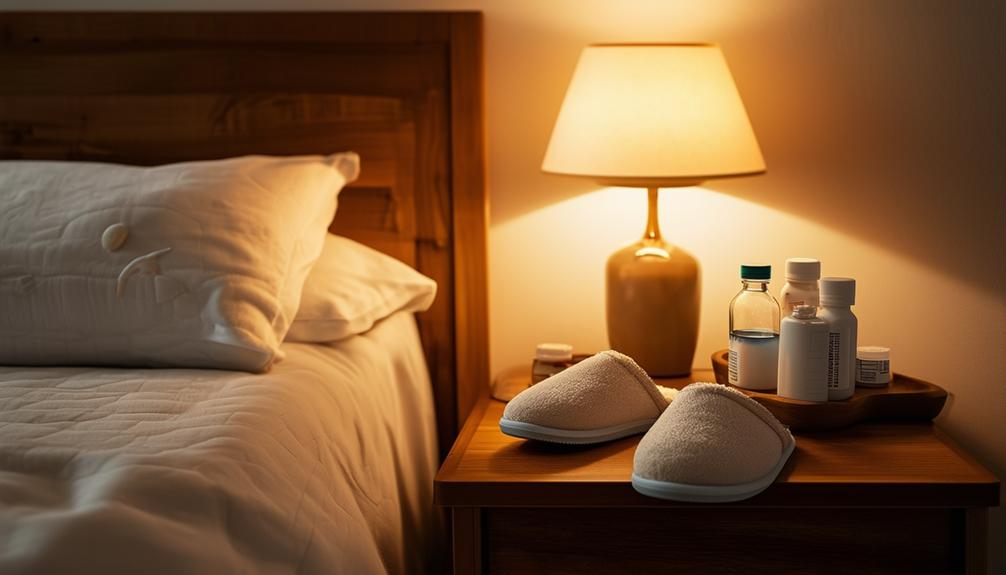
Medications for Restless Legs Syndrome (RLS) include dopamine agonists, benzodiazepines, opiates, and anticonvulsants, each targeting specific symptoms for effective management. Dopamine agonists like pramipexole and ropinirole are often the first-line treatments, increasing dopamine levels in the brain to alleviate the symptoms of restless legs. These medications don't cure RLS but provide significant relief, enhancing your quality of life.
Benzodiazepines such as clonazepam can help improve sleep quality by reducing leg movements that disrupt rest. If pain is a predominant symptom, opiates may be prescribed for their potent analgesic properties. Anticonvulsants like gabapentin are effective for patients with painful RLS, working by stabilizing nerve activity to reduce discomfort.
According to the International Restless Legs Syndrome Study Group, individualized treatment plans are essential for effective management. These plans may combine various medications to address the specific symptoms and severity of your RLS.
Additionally, addressing iron deficiency is important, as low iron levels can exacerbate symptoms. Regular consultations with your healthcare provider will help tailor the most effective treatment regimen for your needs, ensuring that you regain control over your restless legs and enjoy better sleep and daily functioning.
Physiotherapeutic Interventions
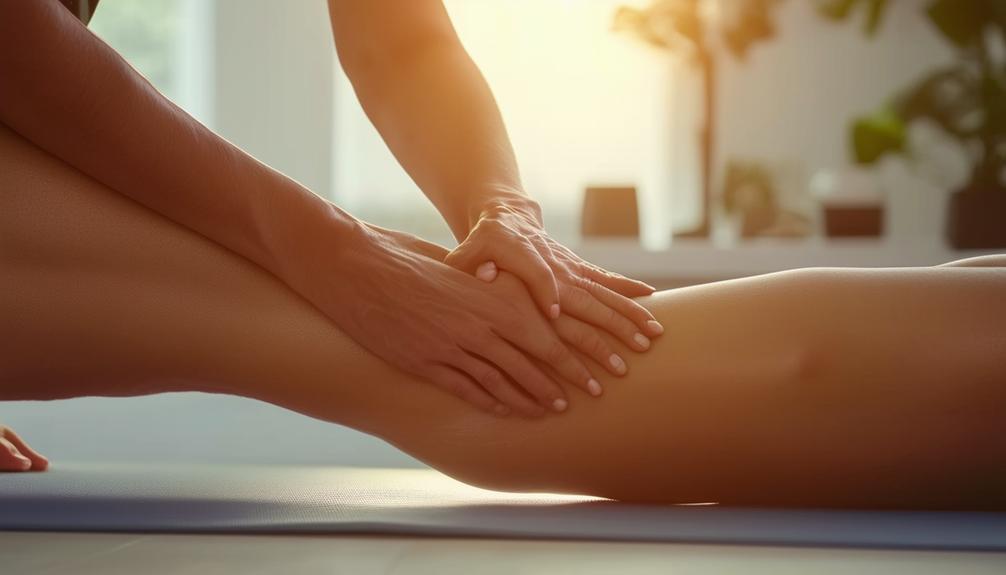
You'll find that physiotherapeutic interventions for Restless Legs Syndrome (RLS) can greatly improve symptom management.
Stretching exercises, massage techniques, and heat and cold therapy offer evidence-based relief by enhancing muscle function and circulation.
Incorporating these techniques into your routine can reduce RLS severity and improve sleep quality.
Stretching Exercises for Relief
Incorporating stretching exercises such as calf and hamstring stretches into your daily routine can significantly reduce the severity of restless legs syndrome (RLS) symptoms, enhancing both sleep quality and overall well-being. These physiotherapeutic interventions represent a non-pharmacological approach to managing RLS, aiming to alleviate discomfort and improve sleep quality without the need for medication. Regularly performing these stretching exercises can decrease RLS severity, offering significant relief from the bothersome sensations that often accompany this condition.
Evidence-based studies have demonstrated that a consistent daily regimen of stretching exercises can lead to a marked improvement in your quality of life. By targeting muscle groups commonly affected by RLS, such as the calves and hamstrings, these exercises help relax the muscles and reduce the frequency and intensity of symptoms. This non-invasive approach is particularly beneficial for those seeking to minimize their reliance on pharmacological treatments.
Adopting this strategy not only mitigates symptoms but also fosters a sense of community among individuals dealing with RLS, as they share effective techniques and support each other through their journeys. Ultimately, integrating stretching exercises into your routine can be a simple yet powerful way to manage restless legs syndrome effectively.
Massage Techniques
Massage techniques, as a form of physiotherapeutic intervention, effectively alleviate restless legs syndrome (RLS) symptoms by relaxing leg muscles, improving circulation, and reducing the urge to move the legs. By targeting areas of tension, specific massage techniques such as deep tissue massage, Swedish massage, and trigger point therapy can greatly alleviate discomfort and improve symptoms.
Deep tissue massage focuses on the deeper layers of muscle tissue, releasing chronic patterns of tension. Swedish massage, known for its soothing and gentle strokes, promotes relaxation and enhances circulation, while trigger point therapy targets specific areas of muscle tightness, reducing localized pain and the compulsion to move.
Incorporating regular massage sessions into your overall treatment plan can help manage RLS more effectively. Evidence-based research indicates that these interventions not only reduce pain but also promote relaxation and enhance overall well-being. By consistently working with a qualified massage therapist, you'll likely find a marked reduction in RLS symptoms.
Heat and Cold Therapy
Heat and cold therapy provide effective, non-invasive methods to alleviate restless legs syndrome (RLS) symptoms by targeting muscle relaxation and inflammation reduction.
Heat therapy, including warm baths or heating pads, can greatly relax your leg muscles, thereby reducing the discomfort associated with RLS. The application of heat increases blood flow, which may help soothe the unpleasant leg sensations that often accompany this condition.
On the other hand, cold therapy, such as ice packs or cold compresses, is useful for reducing inflammation and alleviating discomfort. Alternating between heat and cold therapy can maximize relief by enhancing blood circulation and offering a well-rounded approach to soothing leg sensations.
These physiotherapeutic interventions are particularly appealing because they're non-invasive and drug-free, making them easy to incorporate into a comprehensive management plan for restless legs syndrome.
For best results, consult with a healthcare provider or a physiotherapist to determine the most effective combination of heat and cold therapy tailored to your specific needs. This collaborative approach ensures a personalized treatment strategy, fostering a sense of belonging and confidence in your path to managing RLS symptoms effectively.
Frequently Asked Questions
What Relieves Restless Legs Fast?
You can quickly relieve restless legs with warm baths, foot massages, or cold packs. Incorporate magnesium supplements, compression socks, yoga stretches, herbal teas, and weighted blankets. Prioritize sleep hygiene, and consider acupuncture therapy for effective, evidence-based relief.
What Is the Most Common Treatment for Restless Leg Syndrome?
For restless leg syndrome, dopamine agonists are most common, juxtaposed with iron supplements and lifestyle changes. Prioritize sleep hygiene, leg massages, hot baths, acupuncture therapy, compression socks, regular exercise, and herbal remedies for thorough relief.
What Makes Restless Leg Syndrome Go Away?
You can make restless leg syndrome go away by incorporating lifestyle changes, dietary adjustments, and addressing magnesium deficiency. Iron supplements, stress reduction, sleep hygiene, physical therapy, herbal remedies, exercise routines, and yoga practices also contribute to symptom relief.
What Can I Take for Restless Leg Syndrome Over the Counter?
Did you know 10% of people experience RLS? For over-the-counter options, consider magnesium supplements, iron for iron deficiency, topical creams, or herbal remedies. Warm baths, essential oils, sleep hygiene, dietary changes, mindfulness techniques, and acupressure points can also help.
Conclusion
Imagine the relief of sinking into a plush chair without the constant urge to move your legs.
By embracing lifestyle modifications, engaging in leg stretching exercises, and alternating heat and cold therapy, you're addressing restless legs syndrome holistically.
Iron replacement therapy and medications tailored for RLS offer evidence-based solutions. Meanwhile, physiotherapeutic interventions can refine your treatment plan.
Trust the science, and take control of those restless nights—your legs will thank you.



